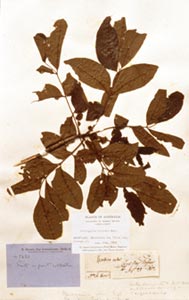Collecting and society
Keeping today
Why do we keep them?
We hold specimens from all over the world. Why is it important that we keep them here, as one set of collections?
Small pieces of things that were once living have no intrinsic value in themselves. It is the scientific work done by researchers, in classifying, describing and comparing them with others, that gives them value, and makes them specimens.
Much of this value comes from the ordering of them with other specimens - kept in their taxonomic context, specimens are more useful than if arranged randomly or by date of collection.
The specimens are of greater value within an organised, curated collection than isolated or dispersed across several places. They are available for further research and are of greater use to researchers.

Learn more about:
 |
Loaning specimens
Our collections are loaned to other institutions to be worked on by a wider range of researchers. |
|
Many science projects require researchers to compare different species from all over the world. Only a collection as large as the Museum's has this kind of global reach and variety. |
|
Looked after
The Museum aims to be a world leader in collection care. As such, we can maintain the collections for their continued use in the future.
Specimens face many threats, and are hard to look after. Over many years, the Museum has developed considerable expertise in collection care.

Learn more about:
 |
Collections care
How do our curators look after specimens? |
|
We also help other institutions look after their collections. We advise on how to care for specimens, and also on how to develop and use them for research. |
|